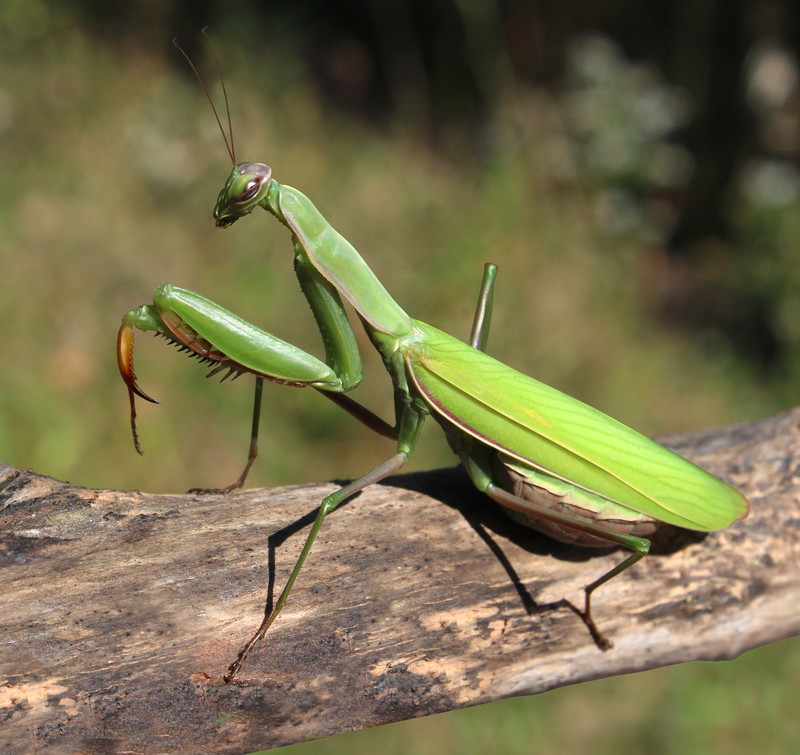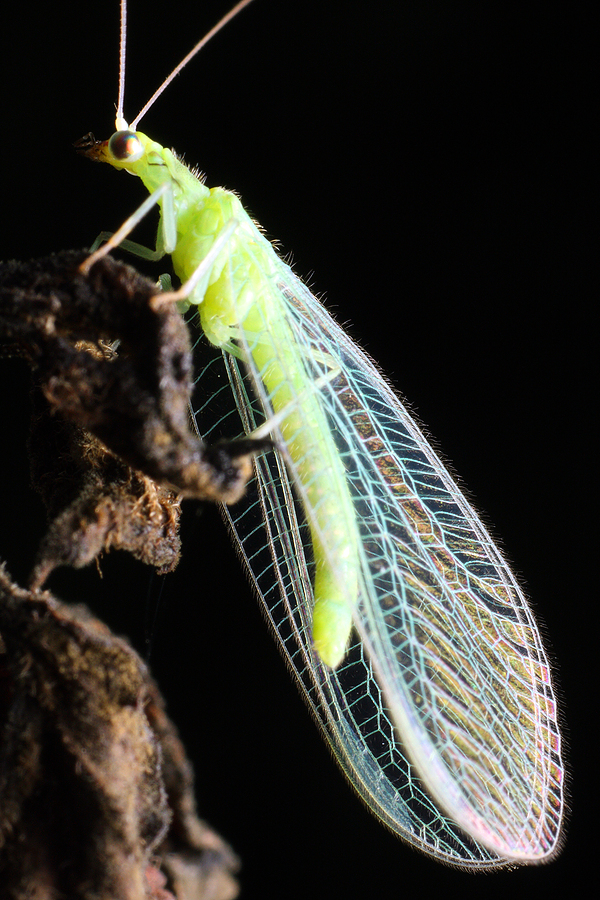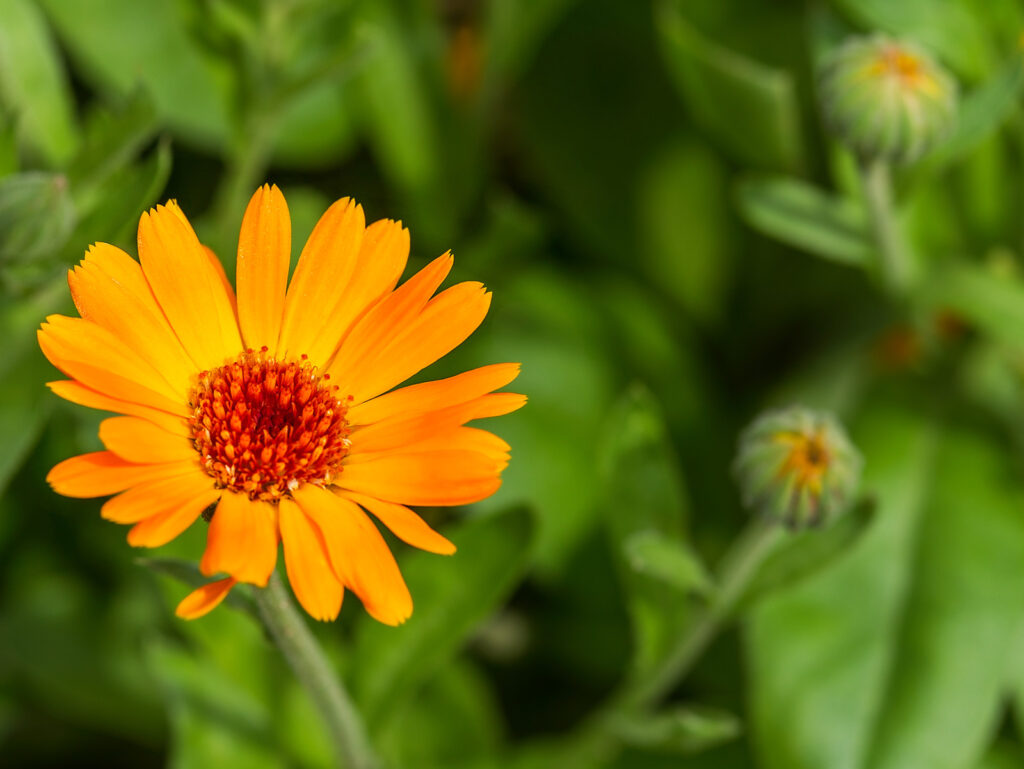Beneficial insects play a vital role in maintaining the health and productivity of any vegetable garden. Beneficial insects work to control pests and promote healthy plant growth, ultimately leading to higher crop yields and better produce. To reap the benefits of beneficial insects, it’s important to create a suitable environment in which they can thrive.

The benefits of beneficial insects
One of the biggest challenges in maintaining a healthy vegetable garden is managing pests and diseases. Chemical insecticides and pesticides might seem like an easy solution, but they can do more harm than good by killing beneficial insects and disrupting the natural ecological balance of the garden. Instead, Using beneficial insects to control pests is a way to boost productivity.
One of the most important steps in fostering a healthy population of beneficial insects is to avoid using harmful pesticides and chemicals. These substances not only kill off pest insects but also kill off beneficial insects. Natural solutions such as companion planting, crop rotation, and even introducing beneficial insects directly into the garden are alternatives to using man-made chemicals in the garden.
Introducing beneficial insects to the vegetable garden is an excellent way to create a natural and healthy environment for plants. Beneficial insects control pest insects and pollinate plants. Encouraging beneficial insects in the garden can reduce the use of pesticides that can harm the environment.

Common beneficial insects
Many beneficial insects can help to protect the garden from pests and improve plant health. These insects are an important part of a natural, sustainable approach to gardening.
One beneficial insect that can be particularly helpful in a vegetable garden is the ladybug. Lady bugs are voracious eaters of aphids, which can be a major pest for many types of vegetables. They also eat other harmful insects like mites and mealybugs. By introducing ladybugs to the garden, you can keep pests under control and ensure vegetable plants stay healthy.
Another beneficial insect that can be useful in a vegetable garden is the green lacewing. Green lacewings are predatory insects whose larvae feed on aphids, caterpillars, and other pests. They can also help to control spider mites and thrips. Adding lacewings to the garden can help to keep plants healthy and minimize damage from harmful insects.
A third beneficial insect is the praying mantid. These insects are excellent predators as they hunt and consume a variety of pests, including caterpillars, moths, and flies. Praying mantises are fascinating creatures to observe.
In addition to ladybugs, lacewings, and praying mantises there are many other beneficial insects that can be helpful in a vegetable garden. These include predatory mites, parasitic wasps, and ground beetles, among others. By taking a natural approach to pest control and using beneficial insects to your advantage, you can keep your vegetable garden healthy and thriving for years to come.
Here is a list of important beneficial insects, click on any one of these to learn how they benefit the garden and how you can attract them: ladybug, praying mantid, green lacewing, assassin bug, big-eyed bug, honey bee, parasitic wasps, soldier beetle, aphid midge, damsel bug, dragonfly and damselfly, ground beetle, tiger beetle, hover fly, and tachinid fly.

Beneficial insects’ habitat
To provide a habitat for beneficial insects, plant a variety of native and non-native plants. Choose plants that provide nectar, pollen, and a place to lay their eggs. Avoid using pesticides, as they can harm beneficial insects and disrupt the balance of the ecosystem. Provide shelter for beneficial insects by placing rocks, logs, or other materials in your garden that can serve as hiding places or nesting sites.
A variety of habitats will encourage beneficial insects to live in the garden. Plant flowering trees and shrubs and hedges, incorporate mulch and fallen leaves for ground-dwelling insects to burrow under and leave patches of undisturbed soil for ground-nesting bees. A variety of habitats and resources throughout the garden can support a diverse group of beneficial insects that will help keep the garden healthy and thriving. Ensure that the habitat is away from pesticides or any other chemical contamination as these substances can cause harm to beneficial insects. It’s important to choose a location that provides food, water, shelter, and protection from predators.
Another important aspect of creating a beneficial insect habitat is creating water sources. A simple bird bath or shallow dish filled with water can provide a vital source of hydration for beneficial insects, especially during hot and dry weather conditions. Adding a water feature like a small fountain or pond can not only provide water for beneficial insects but also create a peaceful and tranquil atmosphere in the garden.
When creating a habitat for beneficial insects choose a location that meets the specific needs of insects. Consider the type of beneficial insects you want to attract. For example, ladybugs, lacewings, and hoverflies need a sunny location that receives at least four hours of direct sunlight each day. On the other hand, ground beetles and centipedes prefer a shady and damp environment. Therefore, it’s essential to locate the habitat in an area that fits the specific needs of the insects you hope to attract.
Many beneficial insects rely on certain types of flowers, herbs, and shrubs for food and shelter. It’s important to select an area with a variety of vegetation that will attract and sustain beneficial insect populations throughout the year. Since beneficial insects thrive where diverse plant species grow, consider planting vegetables with potent aromas such as basil, dill, and fennel, as they attract a wide range of beneficial insects. You can also alternate your crops to ensure that your vegetable garden has different plant species year-round, thus maintaining the habitat for the beneficial insects.

Plants that attract beneficial insects
A key factor in creating a beneficial insect-friendly environment is to provide a diverse range of plants. Different insects are attracted to different plants. By including a mix of flowers, herbs, and vegetables in your garden, you can attract a wide range of beneficial insects.
Flowers such as marigolds, calendula, and sunflowers are great options that not only provide food for pollinators but also attract predatory insects that feed on pests. Herbs such as dill, parsley, and fennel are also beneficial as they attract insects that feed on aphids and other harmful pests.
Some insects prefer to live in tall grasses, while others prefer to burrow in leaf litter or soil. By planting a mix of wildflowers, native plants, and grasses, you can create a variety of habitats that will appeal to a wide range of beneficial insects.
Some of the best plants for attracting beneficial insects include common herbs like parsley, dill, and mint, as well as flowering plants like coneflowers, black-eyed Susans, and sunflowers. By incorporating these plants into your garden and creating a hospitable environment for beneficial insects, you can create a thriving ecosystem that will benefit your plants and the environment as a whole.
One of the best plants to attract beneficial insects is the dill plant. This herb is known for its strong scent, which is particularly attractive to ladybugs and syrphid flies. Lady bugs are well known for their appetite for aphids, while syrphid flies feed on a wide range of pests, including aphids and thrips. By planting dill, you can attract these insects and help to keep your plants pest-free. Dill also attracts parasitic wasps. These insects are voracious predators that will pack a punch to bugs like aphids, mealybugs, and spider mites.
The nectar and pollen of plants like phacelia, buckwheat, and sweet alyssum are a favorite of beneficial insects like lacewings, which are known for keeping spider mites and aphids under control. Good bugs also feast on flower petals, so don’t be alarmed if a ladybug is seen munching on a flower head.
Another excellent plant for attracting beneficial insects is the yarrow plant. This flowering plant is particularly attractive to lacewings, which are a type of predatory insect that feed on aphids, thrips, and other small insects. Yarrow is also known to attract hoverflies, which are a type of beneficial insect that feed on nectar and pollen, as well as aphids and other pests.
Another great choice for beneficial insects is the sunflower. Sunflowers attract a wide range of pollinators, including bees, butterflies, and hummingbirds. They also provide a habitat for beneficial insects, such as lacewings and lady beetles, which can help to control insects that damage your plants.
Finally, if you’re looking to attract pollinators to your garden, you can’t go wrong with planting some clover. This plant is known for its sweet-scented flowers, which are particularly attractive to bees and butterflies. By growing clover in your garden, you can help to support these essential pollinators and ensure that your plants are fertilized and able to produce fruit and seeds.

When selecting plants for beneficial insects, it is essential to consider the type of insects you want to attract and their specific plant preferences. For example, bees prefer plants with flat or shallow flowers, such as daisies, sunflowers, and lavender, while butterflies prefer flowers that have a landing platform, such as coneflowers, milkweed, and zinnias. Lady bugs are attracted to plants that have small flowers, such as dill, fennel, and coriander. By planting a variety of species that cater to the needs of multiple beneficial insects, you can increase the biodiversity in your garden.
When planting for beneficial insects, consider the timing of your blooms. By staggering your blooms throughout the growing season, you can ensure that there are always flowers available for the insects to feed on. This is especially important for bees, which need a consistent source of nectar and pollen to survive. By carefully selecting plants with different bloom times, you can create a garden that’s full of color and life all season long.
In addition to attracting beneficial insects, planting species that are native to your region can also support the local ecosystem. Native plant species have developed natural relationships with the local insects over time and, as a result, provide a reliable source of food and shelter. Native plants also require less maintenance and water, making them a sustainable addition to any garden. By choosing to plant species that benefit insects and support the environment, you can make a positive impact on both your garden and the local ecosystem.
Another effective way to promote beneficial insects is to allow a small portion of your garden to become a wildflower meadow. Let some of the weeds and wildflowers grow so they will attract hoverflies, lady beetles, parasitic wasps, and green lacewings, which are all beneficial insects. The natural plant diversity in the meadow encourages enhanced insect diversity and drives the population of good bugs.
Beneficial insects like ladybugs, lacewings, hoverflies, and parasitic wasps can help keep pests under control in your vegetable garden. They do this by eating the invasive insects or laying eggs in them, which eventually leads to their demise. The good news is that you can attract these beneficial insects to your garden by planting the right type of flowers and herbs. Choose plants that attract these helpful bugs, and you will have a self-sustaining natural pest control system.
Related articles:
Vegetable Garden Organic Pest Control
Vegetable Garden Diseases Problem Solver
Vegetable Garden Organic Weed Control
Garden Planning Books at Amazon:
- Vegetable Garden Almanac & Planner
- Kitchen Garden Grower’s Guide Vegetable Encyclopedia
- Vegetable Garden Grower’s Guide
- Tomato Grower’s Answer Book















